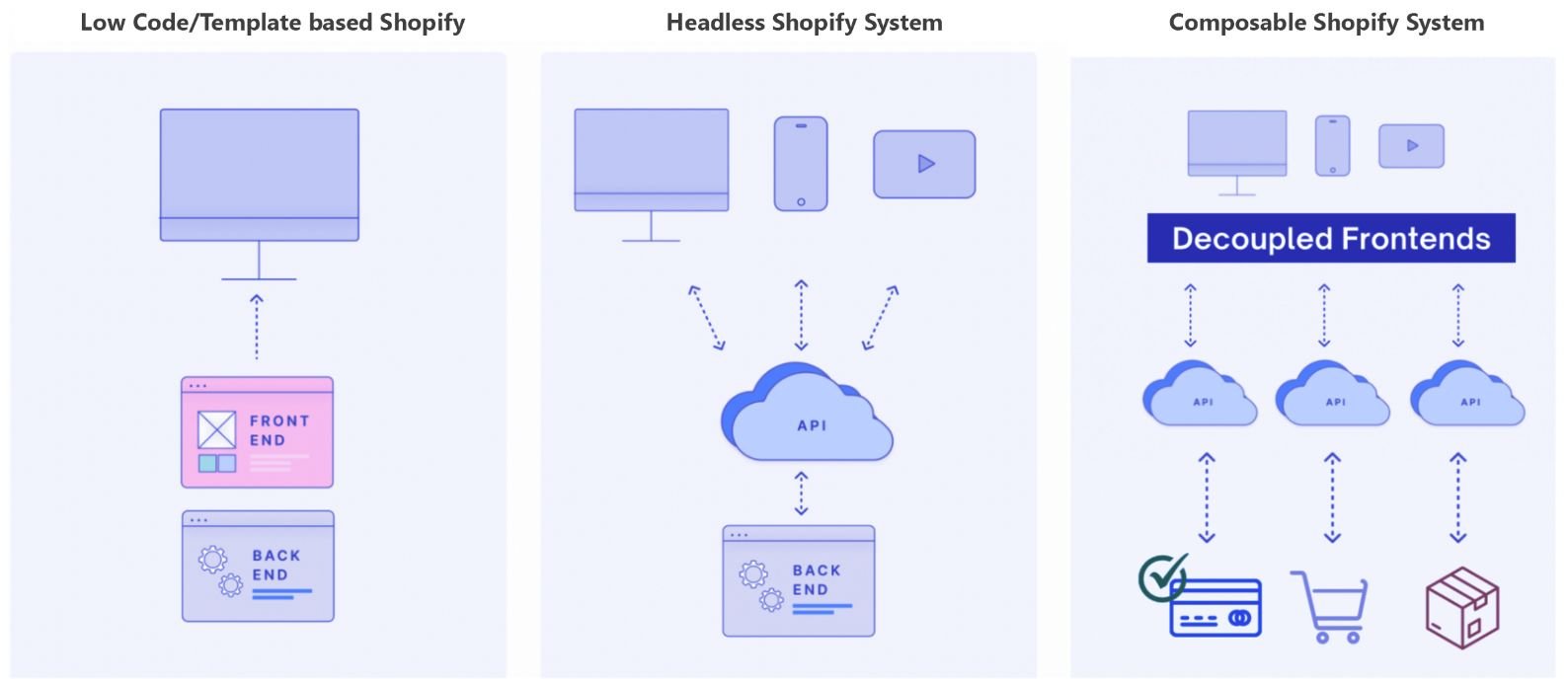Choosing the right architecture for your Shopify implementation
- Kiran George
- Last Updated - June, 2024
It is crucial to think about future maintenance into account while creating a product. Software architecture is the planned organization of a programme, covering the specification of how interface elements interact with the program's core operations. To put it simply, this is a method of defining which functions are in charge of what and how they work together.
Shopify lets you choose the right architecture for your business namely:
✅ Full-platform with built in or 3rd party templates (low code)
✅ Full-platform with custom templates (low code after the initial development of template)
✅ Headless (Utilize Shopify's backend but add a custom storefront hosted outside of Shopify)
✅ Composable Commerce (Kind of evolution of Headless architecture, where the backend is not tied to single backend system)

Which Shopify architecture is more suitable for your business: Headless or Native Shopify?
A summary highlighting the benefits and drawbacks of both architectural framework:
Native Shopify:
✅ Easy to train internal teams to carry out day to day activities and after go-live maintenance.
✅ Shopify manages the complete server infrastructure, its security and updates. So significant reducing in operational cost.
✅ Shopify 3rd party apps are just plug and play in the native architecture.
✅ Shopify Plus provides access to extra APIs and Shopify Flow (I will do another post on Shopify Flow) by which some of the advantages of headless architecture is now available in native Shopify.
Headless flavour of Shopify:
✅ Easy to integrate external application that provide enhanced features that Shopify don't offer, like an ERP system or CRM system
✅ Can improve page load speed by effectively using frontend frameworks like Next.Js or React.
✅ Relatively easy to hire developers who has experience in frontend technologies like Next.Js or React than finding someone who are good at liquid template scripting.
My Thoughts:
The choice of selecting headless or native Shopify architecture is becoming hard as the platform keeps evolving and its getting more skewed towards native architecture than ever before. Two main reasons I can easily point out are:
✅ Teams started to prioritize rapid strategic growth based on low-code development over technical flexibility of the platform.
✅ Due to increase in competition and an inflation led economy, reducing operational cost became top priority.
